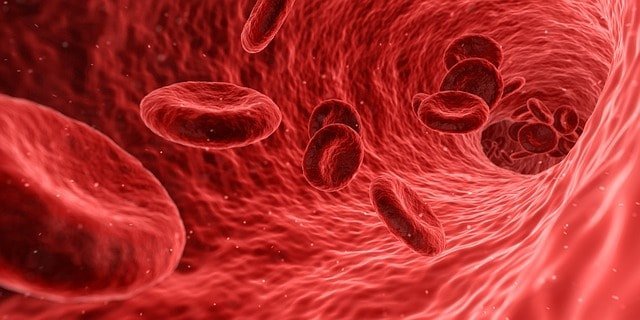
Following a medical abortion, you may experience bleeding lightly, moderately, or heavily. In some cases, women do not bleed afterward, at all.
Bleeding can start right after the abortion process or until several days after. When it happens, it may stop at some point and then start again.
Don’t be surprised if you experience increased bleeding 4 to 5 days after a medical abortion, complete with clots and strong cramps that will last for several days.
Menstrual-like cramping is normal for the first week after an abortion and may extend to the second week. So don’t be alarmed.
Just take a pain reliever to ease the pain, such as Tylenol or Ibuprofen. But avoid Aspirin as it can increase bleeding.
The only time you need to worry or even call an A&E is when heavy bleeding becomes too heavy and too much.
What you need to know about bleeding after an abortion
- Bleeding can last around 1 to 2 weeks
- Blood clots maybe pass like a normal menstrual period
- When the bleeding stops, you may experience spotting until your next period
- 3 to 6 weeks after an abortion, your normal period should begin
- You may experience mood swings or emotional upset for a few days or weeks
- Menstrual-like cramping can happen for the first week or two
It is important to note that the symptoms you experience may vary from one abortion pill to another. In the case of Misoprostol, bleeding and cramps should be expected.
After using the pill, bleeding can start within 4 hours. But it can also happen at a much later period. Bleeding usually signals the start of an abortion.
As abortion continues and progresses, bleeding and cramps will become more severe and may be associated with other side effects like vomiting, diarrhea, nausea, and dizziness.
Cramps and bleeding are often heavier if the pregnancy has developed for longer.
Once you experience heavier blood loss, with severe pain and cramping, this signals that the abortion process has reached its peak.
Once it’s complete, bleeding and cramps should diminish.
2 to 5 hours after using Misoprostol, you may experience the heaviest bleeding which then slows down within 24 hours. Light bleeding will continue for 1 to 3 weeks, and menstrual period should occur 4 to 6 weeks after.
There are instances when heavy bleeding can happen after 48 hours, along with clots that may pass for days or even weeks. This is normal when taking Misoprostol.
What is not normal is when heavy bleeding becomes severe.
How can you tell if you’re bleeding more than it is safe and necessary?
Keep track of the number of pads you’re using
If within an hour you soak 2 maxi pads, which extends to two hours in a row, you need to call your doctor immediately. This is because you are already experiencing severe bleeding.
Keep an eye on the size of any blood clots
Passing clots that are bigger than a golf ball for 2 hours or more is a sign of serious bleeding that requires medical attention. Don’t ignore the sign and call the clinic right away or go to an A&E if you are able.
Abnormal vaginal bleeding may be a result of the blood vessels not constricting or uterine muscles not contracting to stop the bleeding. On very rare occasions, it can also be a result of a perforated uterus or a lacerated cervix.
That is why abnormally heavy bleeding after an abortion should not be ignored.
While it is normal to pass blood clots as you heal from a medical abortion, with sizes that range from pebble-like to egg-like, the timeline tells a different story.
Golf ball-sized clots passing for two hours or more is a serious complication.
This can result in the uterus enlarging and causing severe pain because the cervical opening is blocked. It can be caused by the uterus not contracting and passing out tissue during an abortion.
Monitor the length of time that you’re heavily bleeding
Bleeding heavily for 12 hours in a row is bad news. This may be a sign that something is wrong and you should contact your physician right away.
The same is true if you bleed heavily for 12 hours or more and the color of blood is bright red instead of darker red.
Bleeding longer than 2 weeks
If you experience spotting or bleeding longer than 2 weeks, you should call your doctor for an appointment.
Remember that normal bleeding after an abortion should only last around 1 to 2 weeks. Anything longer than that is a cause for worry.
You should also call the doctor if you don’t have your period within 6 weeks after your procedure. There could be underlying causes that need to be checked and addressed immediately.
Based on the information above, one of the most important signs to look out for is the timeline of bleeding following an abortion.
Bleeding heavily during and a few weeks after an abortion is normal, provided that there are no large clots and that you’re not soaking several maxi pads or sanitary towels in one hour.
Bleeding for two weeks is common. But can be worrisome if it lasts longer.
With this in mind, monitor how long you bleed following a medical abortion and keep an eye out for other symptoms.
These include signs of infection, such as a headache, dizziness, or muscle aches, severe belly pain, 4 to 6 hours of vomiting, heavy or smelly vaginal discharge, and pain in the genital area.




i was 6 weeks pregnant when i had an abortion, i bleed for a like a week then it stopped ….i started to experience some discharge a white discharge it didn’t smell any way to me i don’t know if its because of the antibiotics i take them for my acne…….then i experience some light blood a few weeks later i thought it was my period but it only lasted for a few hours then stop ….it stopped again its been going on and off for weeks …..and now currently am having some very abnormal bleeding with I have been using up more pads than i usually do every 1 hour I have to change my pad filled with blood
Please consult your OB-GYN to get a vaginal exam and possible a Transvaginal Ultrasound. The history is giving suspicion of retained pregnancy products (products of conception). But it is also normal to bleed heavily for a few cycles after abortion.
I had a pill abortion (Misoprostol) 2 weeks and 5 days ago, i went for my 2 week check up the Medical Assistant was giving me a vaginal ultrasound and was taking along time and slightly hurting me so i ask if everything was ok. She said that she was trying to get a clearer picture to make sure my uterus was empty and she took about four printed them out and said she was going to showed the doctor. The MA came back and said the doctor said it was empty. When the doctor came in she asked me if i was still bleeding and how much and i said yes spotting the doctor said that was normal but it should eventually stop. Its been 5 day from my check up and I’m still bleeding and now it has a really bad smell it still very light bleeding but the smell is really bad. Should i worry or is the smell normal along with the light bleeding? Side note* this is my 2nd pill abortion had one 3 years ago and had a baby between then and now. baby is 17 months.
Consult your doctor if you have fever along with smelly discharge or any other symptoms. It is usually okay to have heaving/painful bleeding when you go for medical abortion but the persistence of symptoms for a long time (3+ cycles) is not normal.
Hello I’m Juliana, I was 2 weeks pregnant and had an abortion and begin bleeding heavily for three days. I cant eat. Whenever food enters my stomach then I vomit and am weak too. Please what is the cause? And what should i do for the blood to stop?
Hi Juliana, if you are bleeding through a pad every two hours you should be contacting your doctor. Has the bleeding stopped or lessen at all? With an abortion that early in the pregnancy there generally isn’t that much to expel from the body, however, every body is different. As for vomiting that could still be the pregnancy hormones causing you to still have those symptoms. I would though recommend contacting your doctor and discuss your issues with them. They may be able to offer more insight or at least have you come in to check things out and make sure that you are okay.
Hi, I was two weeks pregnant and I have done abortion but only few drops of blood came out and it stop the following day it is normal?
Hi Sarah everyones body reacts differently and two weeks is very early so there might not have been that much to expel. I would recommend waiting a few weeks and take a pregnancy test (rule of thumb is wait 4-6 weeks). If you are concerned you can always see your doctor and they can check to ensure it was successful.
I took in abortion pill and blood flowed for some few hours and stopped. What is the cause
Hi Hellina, most likely that was the abortion. The earlier you were along the less bleeding there tends to be.
Hi, please I used cytotec, I had serious bleeding and clotting for just 6 hrs and it stopped, am I still pregnant??
Hello Babi ntah, the best way to determine if you are still pregnant is by doing a pregnancy test.
It’s been nearly 2 weeks since I had my medical abortion. I had very bad cramps and pain a few hours after, but was only bleeding lightly for just over a week then started to get brown blood. I had sex with my boyfriend and since then I’ve only just been passing blood clots and heavy bleeding. What is this?
Hi there Jemma, if this is exactly how you are describing it with heavy bleeding after sex, then you definitely should go see a doctor to ensure everything is fine.
Hi. I had an incomplete miscarriage and had to have the rest taken out surgically. I started bleeding not long after and this continued for two weeks but was getting lighter. Then all of a sudden I’m filling up a maxi pad in hours with numerous clots and cramps. What’s happening?
Hi Arb, if they completed the abortion surgically you shouldn’t have that much bleeding. I would contact your doctor unless this is your period. I would schedule a follow up, especially if you are filling up a pad every two hours.